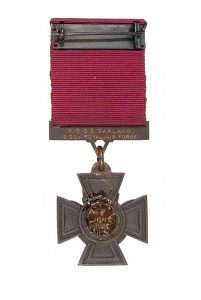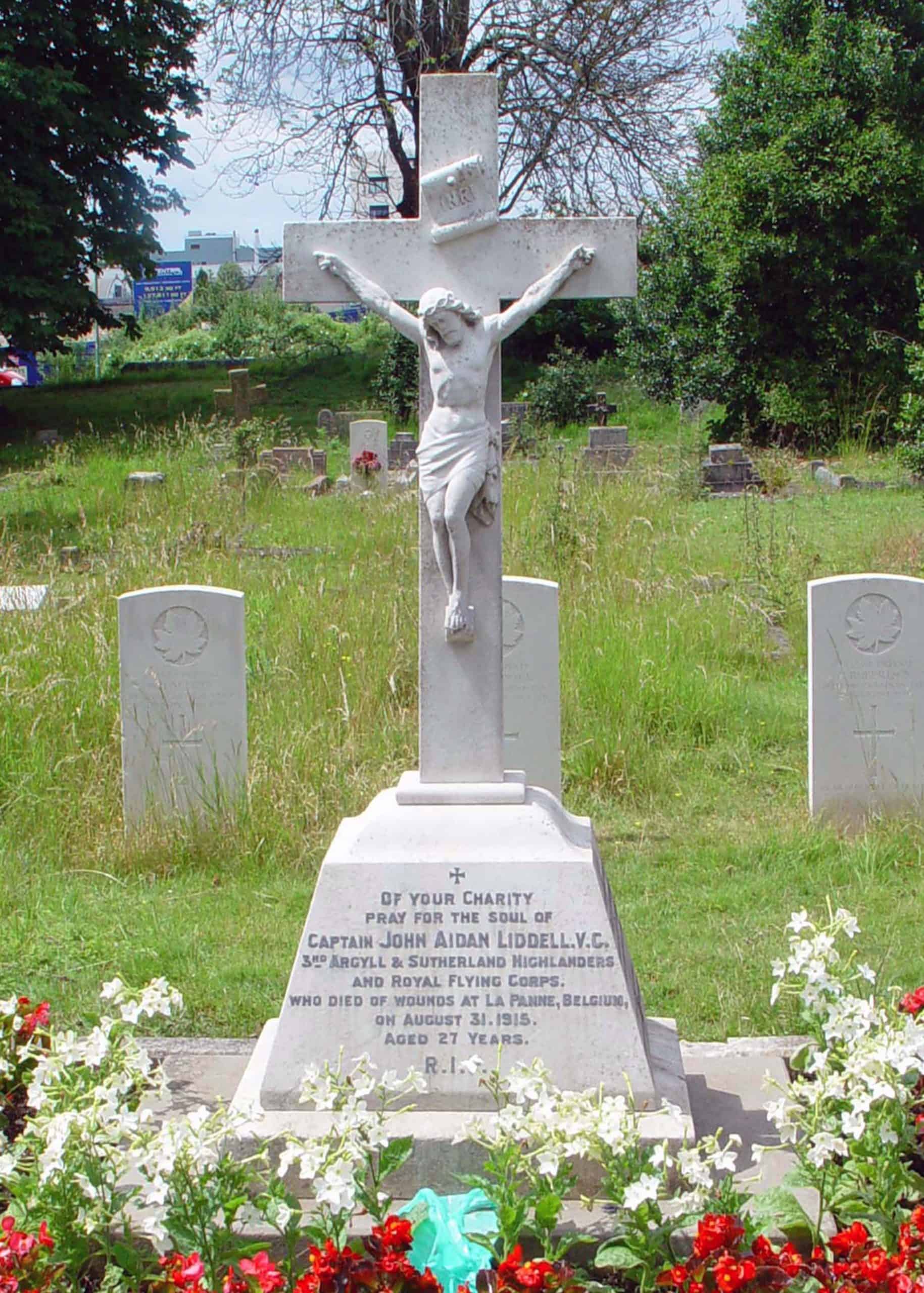Capt. (temp. Maj.) John Aidan Liddell VC Princess Louise’s (Argyll- and Sutherland Highlanders), and Royal Flying Corps

3 August 1888 – 31 August 1915
On the ground, fighting on the Western Front had been static since late 1914, with set piece battles by each side achieving gains measured in yards against casualties counted in the tens of thousands. In 1914, air power was virtually non-existent – aircraft barely able to support the weight of their pilots. First use was for reconnaissance – ‘what is over the next hill?’ – by the pilot taking paper notes. And artillery spotting, dropping target corrections to the artillery.
Then they began to evolve. Reconnaissance aircraft with cameras. But you don’t want to let the enemy see what you are doing. So scout aircraft (now called fighters) to prevent them. And ground attack, with the development of role-specific design: scouts, reconnaissance and ground-support, then finally bombers.
Many of the Great War’s Victoria Crosses were awarded to experienced and skilled pilots who had destroyed many enemy aircraft. Liddell, however, is an example of the majority whose flying career was tragically short: Liddell won his VC on his second – and last – combat flight. Sources differ on the average life expectancy of Great War aviators, ranging from 11 days to 3 months depending upon dates. Liddell himself was in France for only 8 days until his death.

Front of a Victoria Cross
Liddell transferred to the RFC in May 1915 and after pilot training, he joined No 7 Squadron at St Omer on 23 July. On 31 July he was pilot of RE 5 serial 2457 for a routine reconnaissance patrol.

RE 5 At Central Flying School.
Note Union flag on rudder and under-wing, before adoption of roundel as national identifier. (RAF Museum X003-2602-11179)
The London Gazette Monday 23 August 1915:
‘His Majesty the KING has been graciously pleased to approve of the award of the Victoria Cross to the undermentioned Officer:
Capt. (temp. Maj.) John Aidan Liddell VC Princess Louise’s (Argyll- and Sutherland Highlanders), and Royal Flying Corps. For most conspicuous bravery and devotion to duty on 31st July, 1915. When on a flying reconnaissance over Ostend-Bruges-Ghent he was severely wounded (his right thigh being broken), which caused momentary unconsciousness, but by a great effort he recovered partial control after his machine had dropped nearly 3,000 feet, and notwithstanding his collapsed state succeeded, although continually fired at, in completing his course, and brought the aeroplane into our lines half an hour after he had been wounded.
The difficulties experienced by this Officer in saving his machine, and the life of his observer, cannot be readily expressed, but as the control wheel and throttle control were smashed, and also one of the under-carriage struts, it would seem incredible that he could have accomplished his task.’
Liddell’s wounds proved mortal, dying in hospital a month later. However, his award was Gazetted before he died – and Liddell was personally notified a few days before – so, technically, it cannot be described as ‘posthumous’.
 RE 5 at Farnborough 1914.
RE 5 at Farnborough 1914.
Note early trial with bomb and also wheeled skid to prevent aircraft ‘nosing-over’ when landing on soft ground. (RAF Museum X003-2602-11214)
His Victoria Cross is held by Imperial War Museum, London.
 Liddell’s Grave (© The War Graves Photographic Project www.twgpp.org)
Liddell’s Grave (© The War Graves Photographic Project www.twgpp.org)
He is buried in Basingstoke (South View Or Old) Cemetery .
Credits:
- Citation: London Gazette 23 August 1915
- Additional biographical details: For Valour: The Air VCs Chaz Bowyer, Grub Street Publishing.